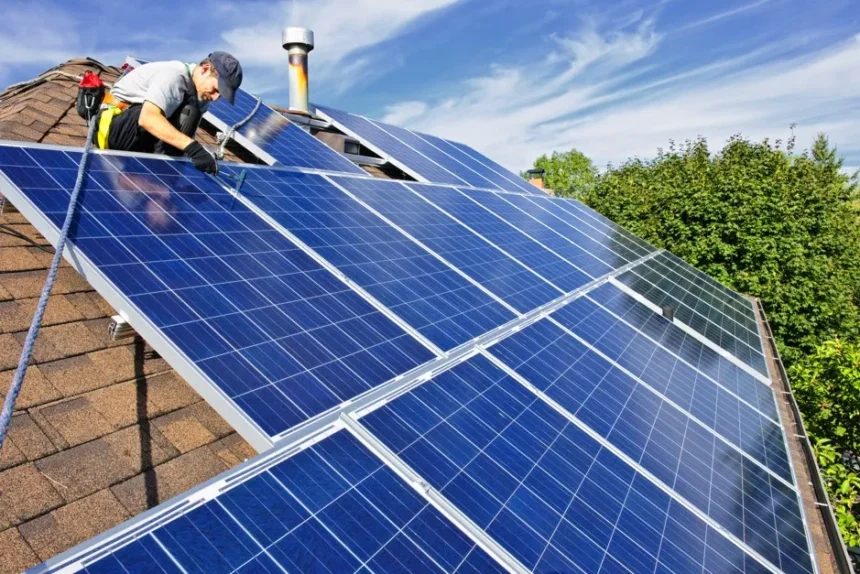If you’ve ever looked at a building, vehicle, or roof and thought, “solar panels just won’t work here,” you’re not alone. Many structures can’t handle the weight of traditional glass panels. Others are curved, fragile, or too limited in space. For years, that meant solar wasn’t an option.
But here’s the expert truth: bendable solar panels are changing the game. They represent one of the most important innovations in renewable energy today. Unlike rigid panels that demand perfect angles and heavy mounts, bendable panels bring flexibility, adaptability, and freedom to places once considered “off-limits” for solar.
As specialists in solar innovation often say, “It’s not just about producing energy anymore. It’s about making solar fit into everyday life, on any surface, in any condition.” And that’s exactly what bendable solar panels do.
Why Bendable Solar Panels Matter
For decades, traditional solar had one major weakness: limited installation. Sure, you could put glass modules on a sturdy flat roof, but what about:
-
Warehouses with lightweight metal roofing?
-
Old heritage buildings that can’t be drilled into?
-
Greenhouses that collapse under heavy weight?
-
Buses, RVs, or delivery trucks on the move?
In these situations, glass panels simply don’t work. Even semi-flexible ones fall short—they bend a little, but they still rely on rigid components. Bendable solar panels are different. They can roll, curve, and stick directly to surfaces. That opens a world of opportunities for both businesses and communities.
The Technology in Simple Terms
Think of bendable solar panels as solar power flexible panels built with advanced polymers instead of heavy glass. This makes them:
-
Ultra-lightweight – about one-tenth the weight of traditional modules.
-
Fully flexible – not just a slight curve, but the ability to conform to unusual shapes.
-
Durable – resistant to wind, hail, and vibrations.
-
Quick to install – no drilling or large frames required.
That means a logistics hub, an older stadium, or even a truck fleet can generate solar power without reengineering their roofs or structures.
Some of the best manufacturers in the market, like Apollo, are leading this field, offering bendable systems that prove solar can adapt to the real world, not the other way around.
Beyond the Roof: Creative Applications
The beauty of bendable solar panels is their versatility. They’re not limited to rooftops. Instead, they’re being used in:
-
Vehicles – powering refrigeration units, AC systems, and onboard electronics.
-
Temporary structures – tents or event setups that need portable clean energy.
-
Greenhouses – generating power without overloading the delicate structure.
-
Curved architecture – domes, stadiums, or uniquely designed buildings.
-
Outdoor shade systems – through innovations like the photovoltaic awning, which combines shading with electricity generation.
This is solar energy that goes where people need it most, not just where traditional panels allow.
Why Businesses Should Pay Attention
For commercial sites, bendable solar isn’t just about aesthetics. It’s about efficiency, safety, and long-term savings. With these systems, businesses can:
-
Install solar without replacing the roof.
-
Avoid heavy racking systems and drilling that risk leaks.
-
Reduce installation labor and costs.
-
Scale up or down depending on available surface area.
Whether it’s a 2000 sqm logistics warehouse or a fleet of city buses, bendable solar panels make renewable energy practical in ways photovoltaic shingles or rigid panels cannot.
The ROI and Sustainability Impact
Beyond practicality, there’s the question of return on investment. Bendable solar panels help organizations meet:
-
Renewable energy goals.
-
ESG and carbon-reduction commitments.
-
Green building certifications like LEED.
-
Government tax incentives for clean energy.
And because they work with most inverters and battery systems, they integrate seamlessly into existing setups. It’s a straightforward path to cleaner energy without the heavy compromises.
Final Thoughts
Flexible solar panels are not an option. They are a pioneer that eliminates the largest obstacles to the uptake of renewable energy. Their light weight, flexibility, and durability ensure that solar power can be used in roofs, vehicles, and buildings which have previously remained out of the solar revolution.
Bendable solar is the intersection of innovation and functionality to anyone seeking solar power flexible panels, or to those pondering smart alternatives such as the photovoltaic awning.
And although a number of different companies are operating in this field today, certain companies such as Apollo are considered as pioneers, as some of the best solutions available in the market today.
The bottom line? Bendable solar panels are not just the future. They’re the present and ready to bring clean energy to every surface we once thought impossible.
FAQs
1. Will bendable solar panels last as long as traditional ones?
Yes. High-quality bendable panels are designed for harsh conditions. They resist hail, wind, and temperature changes. With warranties often up to 25 years, they perform reliably—without the fragility of glass.
2. Can they really power something big, like a warehouse or a bus fleet?
Absolutely. Businesses worldwide are already using them for logistics centers, sports venues, and transportation fleets. The key is that they can cover large areas quickly, delivering power where rigid systems can’t go.
3. Do they look bulky or strange once installed?
Not at all. Most bendable panels are thin, black-on-black, and low-profile. They blend with rooftops and surfaces seamlessly. In fact, many people choose them because they don’t want visible, bulky frames sticking out.


